Chronic lower back pain affects millions of Americans each year. Whether it’s mild discomfort from sitting too long at work, or severe, disrupting pain, there’s nothing enjoyable about it.
This type of pain is expensive, too. It’s responsible for 2.6 million emergency room visits in the US, costing over $30 billion in combined medical and lost productivity costs. So everybody has a stake in the management of chronic low back pain.
Read on to learn about the problem, what causes it, and the types of treatment of low back pain.
What Is Chronic Lower Back Pain?
Back pain is considered chronic when it lasts for three months or longer. This doesn’t mean three straight months of pain, however. In some cases, it may go away for days or even weeks, only to re-emerge later.
Moreover, it doesn’t have to always be severe. You can have periods of severe pain followed by mild pain. For this reason, it’s important to track your health over time to see trends. Track other important factors such as your diet, exercise, time spent sitting, and other important areas that may be contributing to your condition.
What Causes Lower Back Pain?
Chronic low back pain is often age-related, though this is not always the case. Injury, stress, and other environmental factors can play a role in its development. The most common causes of low back pain include:
- Disc injury and disease: damage to your disc including hernia may trigger low back pain
- Myofascial pain syndrome: muscle pain and soreness triggered by unknown causes
- Spinal arthritis: cartilage inside the spine thins over time causing vertebrae and discs to rub against each other trigger pain.
- Spinal stenosis: nerve pain triggered from spinal canal narrow
- Sports injury or other types of trauma
The low back is something of a mystery to doctors, making diagnosing and treating pain difficult in some cases. For this reason, it’s important to begin by identifying the causes of pain before undergoing extensive medical procedures, as they could potentially worsen the pain. Sometimes, doctors may not be able to identify the source of pain, so they’ll instead create ways for you to manage pain better through nonsurgical procedures and lifestyle adjustments, including diet and exercise.
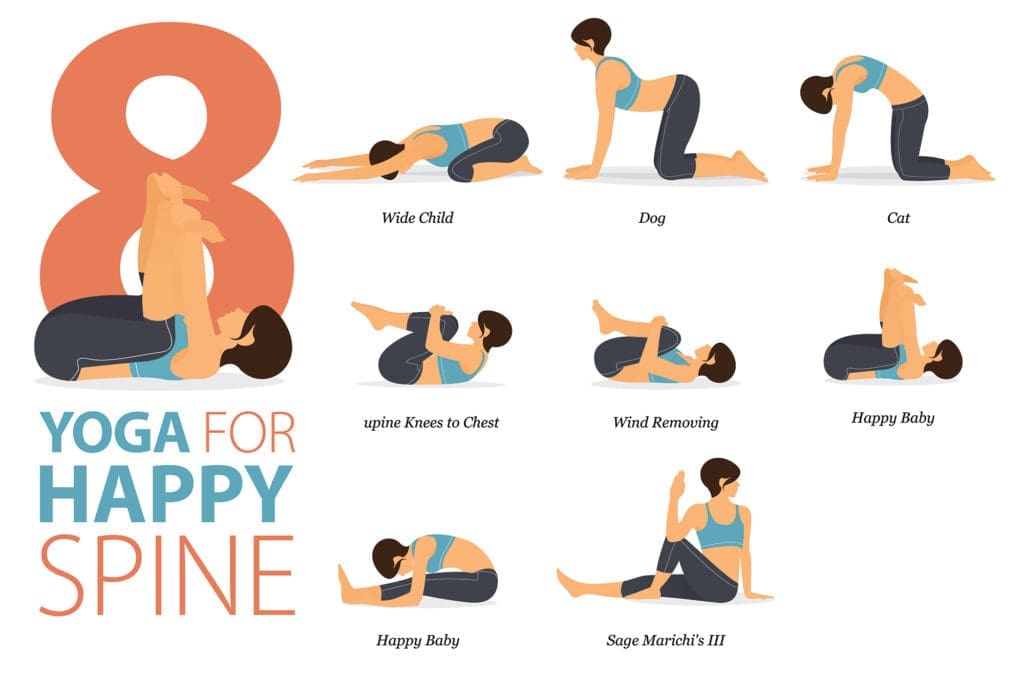 Before We Begin
Before We Begin
There are many different ways to approach the management of chronic low back pain. However, before you try out any of these methods, be sure to discuss them with your doctor or physical therapist. Doctors will always recommend healthy diets, but some of these treatment methods may not be appropriate for your condition. Be sure to also keep a journal of your activity, along with logs of your pain level, discomfort, and other key factors that your doctor should be aware of.
How to Recognize the Red Flags of Low Back Pain
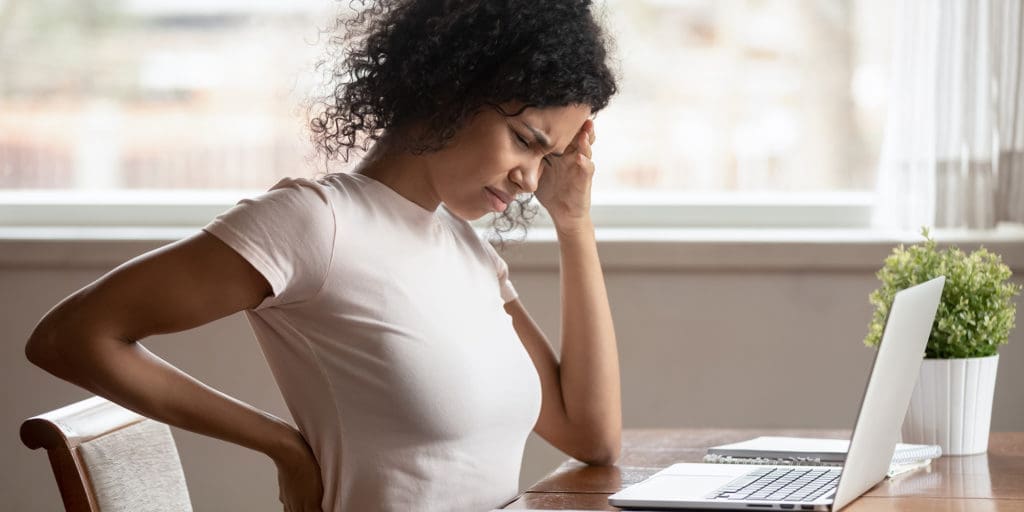

- Deep throbbing pain in the lower back and hamstrings
- Tightness in the spine and surrounding tissues
- Swelling and stiffness in surrounding muscle regions
- Sleep disturbances
- Reduced flexibility
- Recurring pain
If you are experiencing acute and chronic back pain, seek medical attention immediately.
How Do Doctors Diagnose Chronic Low Back Pain?


Beyond a physical test, your doctor may perform a series of imaging scans, including X-rays and MRIs, to check the condition of your spine, discs, and tissue. If necessary, they may need to perform a blood test to rule out any other causes for your pain. After reviewing the results, your doctor will advise some combination of the treatment strategies below:
Management of Chronic Low Back Pain Strategies
1. Exercise and Physical Therapy
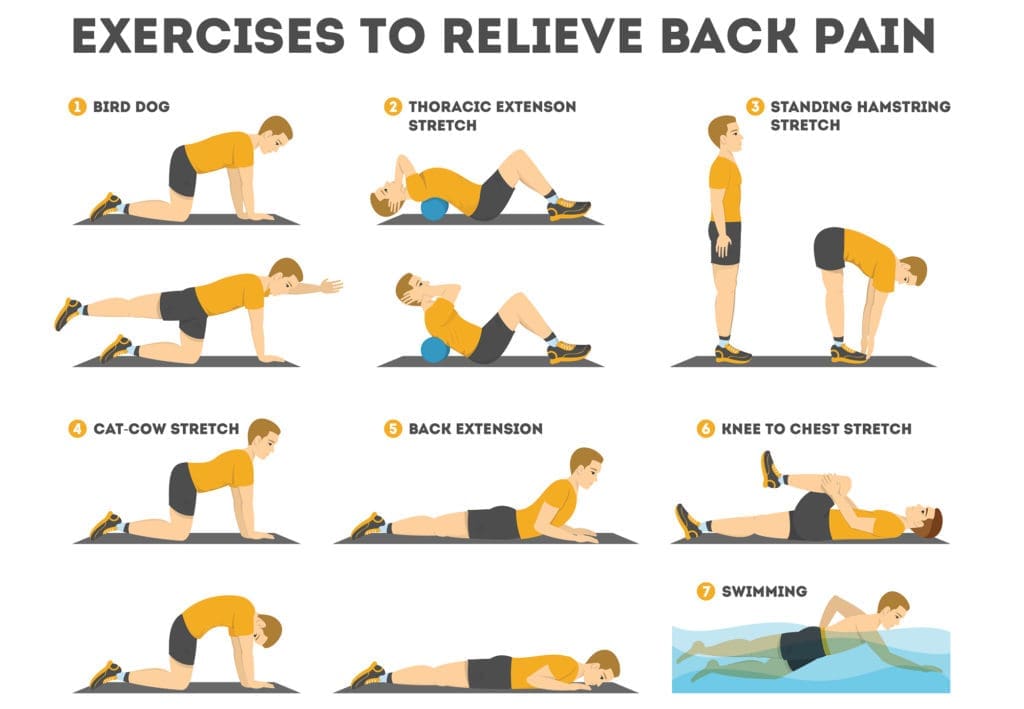

Exercise is the cornerstone of good health, but it’s particularly important for your low back. It is vital that you build up the muscles, ligaments, and connective tissue to not only build flexibility, but also to create the support you need. These are the goals you’ll work toward in both an exercise regimen and in physical therapy.
However, before you Google “good exercises for lower back pain,” be sure to slow down and speak with your primary care doctor or specialist first.
You need to do exercises tailored for your condition that work specifically for you. The most important thing is to stick to a program once you’ve started and give plenty of feedback to your doctor as to the program’s efficacy. When developing a physical therapy/exercise regiment, some of the key things you need to include are:
- Aerobic exercise: Cardio not only helps release endorphins but also improves circulation to help reduce pain.
- Flexibility and stretching: Working to loosen tight muscles to improve mobility and range of motion.
- Understanding your pain tolerance: Finding where you are comfortable and where you can push to build more endurance.
- Core strengthening: Your core is the key to this region, and strong muscles here will not only reduce pain but also prevent it.
- Correcting posture: Fixing problematic sitting and standing positions can reduce the stress put on key muscle groups.
2. Following the Right Diet for Chronic Back Pain


Moreover, maintaining a healthy weight can help reduce spine pain by reducing pressure on the spine. However, this doesn’t mean to begin the latest fad diet. Skip the trends and follow these evidence-based tips.
In general, the anti-inflammatory diet contains higher amounts of antioxidants which help reduce inflammation along with the risk for certain diseases and other benefits. Many features overlap with the Mediterranean diet, specifically a focus on fish, whole grains, leafy vegetables, and healthy fats.
According to Harvard Medical School, the diet should include:
- Olive oil
- Nuts
- Fatty fish like tuna, sardines, and salmon
- Nuts including walnuts and walnuts
- Spinach and kale
- First like blueberries, acai berries, cherries and oranges
Patients with chronic low back pain should avoid:
- Fried foods
- Refined carbohydrates like white bread and pastries
- Soda and beverages high in sugar
- Red meat
- Processed meats like hot dogs and sausage
- Margarine and other types of refined vegetable fats
3. Chronic Low Back Pain Medications
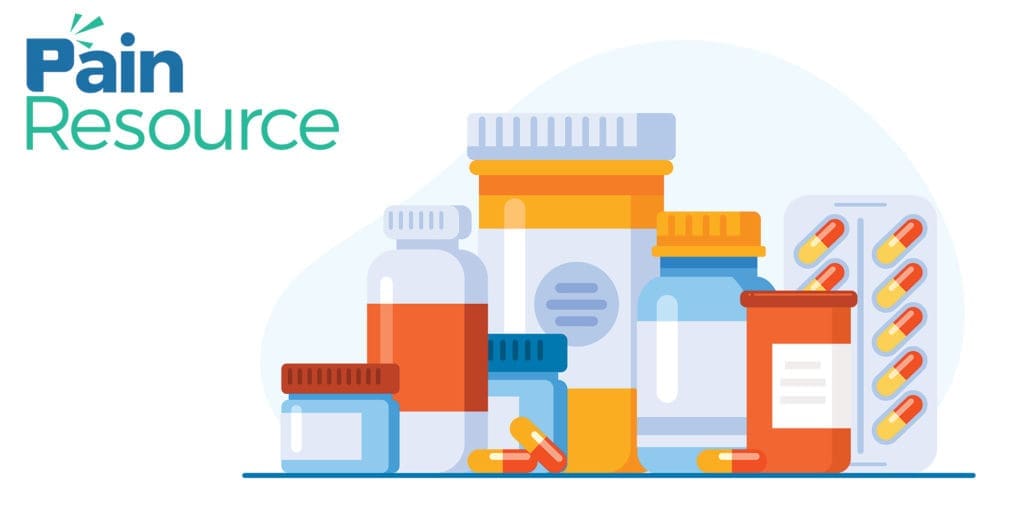

Most of these medications are not intended for long term use, particularly opiates. Opiates are highly addictive and should only be prescribed after an extensive physical and psychological screening by a specialist.
Many doctors may recommend NSAIDs (non-steroidal anti-inflammatory drugs). These medications are well known for their anti-inflammatory and analgesic properties. However, they do have certain side effects to be aware of. Adverse side effects of these medications include nausea, vomiting, constipation, indigestion, and ulcerative colitis.
Finally, acetaminophen is an adequate short-term solution as it has minimal side effects and is affordable. However, patients need to avoid long term usage or amounts exceeding 4 grams/day due to potential liver damage, particularly if combined with alcohol.
4. Alternative Therapies


People have also found success with Viniyoga. This directed style of yoga provides back pain relief through a combination of stretching and breathing exercises.
After six weeks, patients required less pain medication compared to individuals who utilized more traditional exercise and self-care regimens. However, scientists have yet to conduct large-scale studies with randomized trials of this practice, so these results aren’t fully confirmed over broader populations.
Finally, spinal manipulation, massage therapy, and transcutaneous electrical nerve stimulation are effective, especially when combined with diet, exercises, and stretching programs. However, patients should discuss with physical therapists what types of treatment are safe for them to try.
5. Behavioral Therapy
Chronic pain often contributes to an overall decline in quality of life. It can disrupt sleep patterns and create numerous health problems. Behavioral therapy has been used as an effective exercise therapy that not only helps reduce the perception of pain but also helps individuals work through some of the other psychological and emotional issues associated with pain.
In most cases, clinicians utilize cognitive-behavioral therapy to build relaxation skills, change dysfunctional thoughts, and develop healthy pain-coping strategies. Both group and individual therapy sessions combined with medication and other forms of treatment can reduce the need for opiates and other dangerous medications.
6. Biofeedback
Biofeedback is one of the hot buzzwords in pain management right now. As with other, newer forms of therapy, there is not yet conclusive evidence of its efficacy, although it has yielded positive results. Biofeedback is a mind-body therapy that uses an electrical sensor to make subtle changes in your body.
It’s a novel approach to medicine, in that you try to gain control over functions of your body that are normally involuntary, such as your heart rate, skin temperature, and breathing patterns. Generally, people work with a biofeedback therapist who can help them learn to control these different bodily functions. One such practice involves a relaxation technique to reduce the brainwaves that trigger headaches.
Although it may sound a little unbelievable, it’s most often used as a chronic pain therapy, with many patients finding some success. It’s definitely a promising area worth looking into, particularly if you’re not finding the results you need with other types of therapies. Some of the different biofeedback techniques include:
- Deep breathing
- Guided imagery—focusing on certain images (like the texture and color of apples) to focus your mind and encourage relaxation.
- Mindfulness meditation—releasing negative emotions through focusing thoughts
- Progressive muscle relaxation—tightening and relaxing different muscle groups to improve control over them
These techniques are flexible and generally safe for all patients, regardless of their specific conditions. Moreover, there are now apps and other programs so you can look into these techniques easily and affordably from home.
7. Ergonomics and Activity Levels
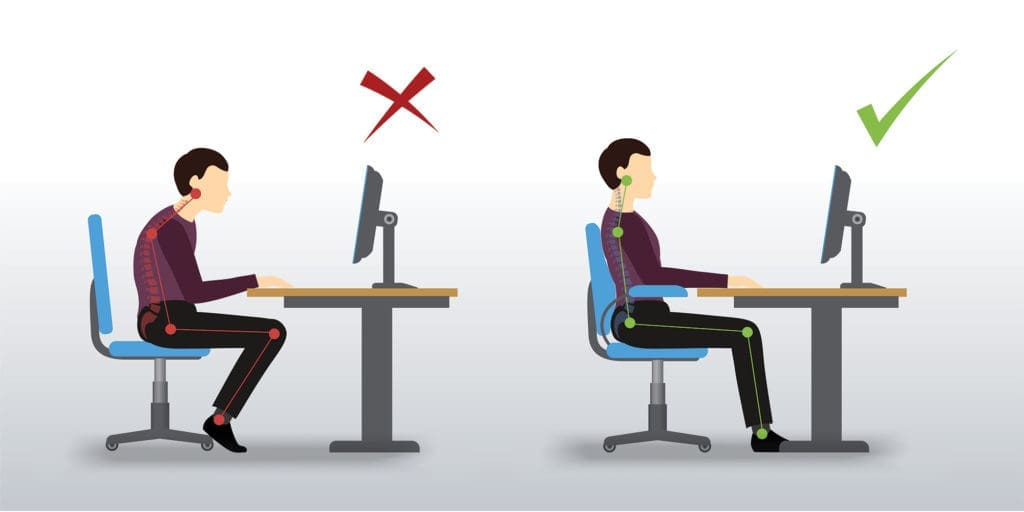

Moreover, individuals with chronic low back pain can benefit from ergonomic products in their homes and offices. Look for chairs with lumbar support and other office tools to ensure comfort during working hours. Finally, avoid long periods of sitting. It’s best to get up at least once an hour to stretch, take a walk, and move around to minimize back pain.
What’s Not Going to Provide Much Help
All of the therapies above have been yielded positive results for the management of chronic low back pain. However, some treatment methodologies are less likely to provide the results you are looking for or are not worth the risks they might entail. Treatment options to be cautious about include:
Epidural Steroid Injections
When it comes to severe pain, there is often an inclination towards using steroids. For years, doctors have used epidural steroid injections to alleviate radicular pain—or pain caused by inflammation, compression, or injury to the spinal nerve root. Studies have shown a small improvement after injection for up to three months.
However, there is no evidence to support the use of steroids in individuals without these symptoms. Moreover, in patients with spinal stenosis or cervical disc herniations, they have also proven ineffective.
Combined with the other side effects such as temporary localized increased in pain, ulcers, decreased immune system function, and arthritis, people with low back pain should most likely avoid this form of treatment unless strongly recommended by their doctor.
Surgery
With many health issues, surgery is often a means of last resort to treat a condition. Unfortunately, surgery does not benefit most people with back pain.
In the rare occurrence when surgery is best for a patient with back pain, it is usually in individuals who have experienced unremitting pain or significant functional disability for a year or longer. Moreover, even these patients should seek out alternative treatments before turning to surgery.
For example, disk replacement surgery has shown to provide short-term relief of pain symptoms, but questionable long-term results. This, combined with issues over artificial disk durability, make surgery not an ideal option for most people. There are times when surgery may be necessary, such as when an individual develops:
- Weakness in limbs and extremities
- Balance and gait issues
- New or progressive bowel and bladder problems
- Worsened reflexes
- A known cause for back pains that other treatments didn’t help.
The general guideline is to get an opinion from at least two surgeons and be aware that pain may still return, even after surgery.
Chronic Low Back Pain: What’s the Outlook?
When it comes to the management of chronic low back pain, there is overall a mixed outlook. As causes of pain and treatment options vary greatly, there is no simple answer. In some cases, people may be able to greatly reduce and even eliminate their pain symptoms through a combination of the management of chronic low back pain strategies above.
However, older individuals and those with more severe symptoms, unfortunately, may not be able to find total relief. Nonetheless, it is possible to manage symptoms and greatly improve the quality of life through proper diagnosis and treatment.
Finally, many other therapies can provide moderate to significant relief including pain medication, alternative medicine, biofeedback, and behavior therapy. Start looking into your options and speak with your care provider about what options are available to you. Low back pain relief is out there, you just need to find what works best for you.
What tricks for lower back pain have helped you?
What topics related to chronic pain support would you like to see us explore?
Email us at info@painresource.com with your ideas.
Are you on Facebook?
Join our online community by clicking here.
Pain management starts and ends with health awareness and dedication. Click here to read more.





I was looking for specific stretches to do on a daily basis and enjoyed this article’s techniques.
There are many chronic pain rehabilitation centers which helps everyone to get rid out of their back pain moreover to manage it you should join some yoga classes as in yoga classes there are some exercise which are too much helpful in providing you relief.
Thanks for teaching us about how different diets, exercises, and stretching are really effective with some different types of therapies that will lessen the requirements of pain medication. My son is having a lot of chronic pain with his back and he wants to make sure that he can be more productive and live without pain. Getting some management and treatments from a professional could be really useful and allow him to be more effective.
Thank you for telling me that I should prioritize getting a mortgage first before shopping for a residential property. My husband and I have been originally planning to buy a single-family house but the ongoing pandemic is trying to get in the way of our plans. It might also be better if we can just get a 3D video tour of the residential real estate property so we can make our decision without actually visiting the house.
It’s good to know from this article that there are alternative ways how to treat back pain such as having acupuncture pain relief and it can show improvements that can last for more than a year. I admittedly have bad posture and although I’m really trying to fix this, it’s really hard for me to keep my back in a good upright position whenever I’m sitting or standing. It might be a good idea to consult medical experts and see if I can undergo this kind of treatment for my back pain.
I like how you mentioned that if back pain persists for a minimum of three months and longer then it’s considered chronic. My brother is thinking of looking for an interventional injections service because he noticed last week that other remedies weren’t working for his back pain while at work. It seems like a good idea for my brother to think about going to a reputable service to help him relieve the discomfort he’s feeling in his back so he can start feeling better and working better again.
It’s good to know that chronic pain can lead to an overall decline in quality of life. My sister has been telling me about how she’s been dealing with a lot of back pain recently. I’ll share this information with her so that she can look into her options for professionals who can help her with pain management.
My father has been having some lower back pain since this past February. It is great to know that it would be smart for him to consider sitting more ergonomically while he is working. It does seem like he should also consider talking to a doctor about his pain.
Very informative and very knowledgeable post. Many of us think surgery could be the final option to cure the back pain but as stated here, there are many therapies. Thank you for the post.
An awesome post about lower back pain. Initially, i thought an inversion table is best for lower back pain but after reading your post, i found some new ways to get rid of my back pain. I would like to share your tips with my friends too. Keep sharing!